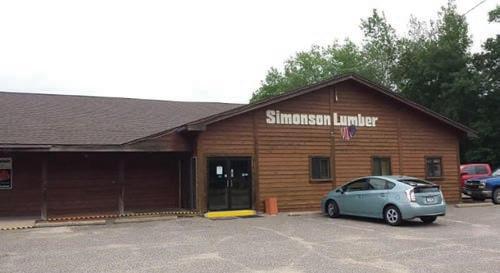WWPI SPECIAL ISSUE: TREATED WOOD IN THE WEST
Solutions for Treated Wood Waste disposal in California By Western Wood Preservers Institute
Treated wood scraps like this were classified as hazardous waste in California in January, making disposal much more difficult. The state is implementing a new variance program that could allow Treated Wood Waste to be disposed of in approved landfills as has been done for nearly 20 years.
THERE ARE NOW some answers to the question of what to do with Treated Wood Waste (TWW) in California. The state started 2021 by classifying TWW as hazardous waste that could only be disposed in a Class I Hazardous Waste landfill, with only one facility near Bakersfield that could accept the waste. That action ended alternative management standards for TWW that were in place for nearly two decades, allowing TWW to be safely disposed in approved composite-lined landfills.
10
n
The Merchant Magazine n
In mid-February, the state Department of Toxic Substance Control (DTSC) began accepting applications for variances that allow TWW to be disposed in composite-lined landfills, as before. Under the DTSC program, there are three types of variances that can be utilized by residents and businesses to dispose TWW: • Transporter Variance: This is for contractors and transporters who do not accumulate or consolidate TWW at any location. The TWW generated must
April 2021
go directly from job site to an approved landfill or transfer station. Cost of the variance is $785.31 with unlimited sites. This variance is expected to be used by decking and fencing contractors. • Small Quantity Generator Variance: This variance is for entities that do not exceed 10,000 lbs. of TWW per calendar year. Cost of the variance is $971.53 for one site, with an additional cost of $756.70 per site up to 10. • Large Quantity Generator Variance: This variance is for entities that exceed 10,000 lbs. of TWW per calendar year. Base cost is $1,012.14 for one site, with an additional cost of $797.31 per site up to 10. Companies must have a federal or state EPA ID number to receive this variance. All TWW generators and transporters must have a variance when they show up to the landfill or transfer station and should check to ensure the landfill or transfer station has a variance to receive TWW. Lumberyards in California should be aware that if they cut treated wood, they are classified as a generator and are required to have a variance to properly dispose of the waste. There is an exception to the variance program that allows homeowners without a variance to take up to 50 lbs. of TWW to approved landfills. Western Wood Preservers Institute (WWPI) has prepared an infographic to help guide businesses to determine the proper variances needed. It can be downloaded at wwpi.info/ TWW_variance. More information on the variance program and to apply, go to the DTSC website at dtsc.ca.gov/ Building-Products.com


















